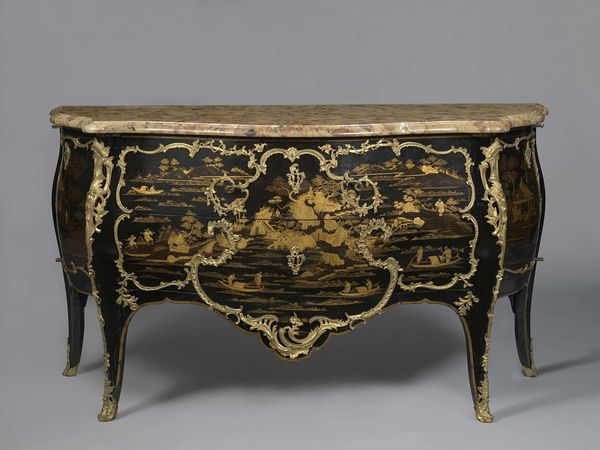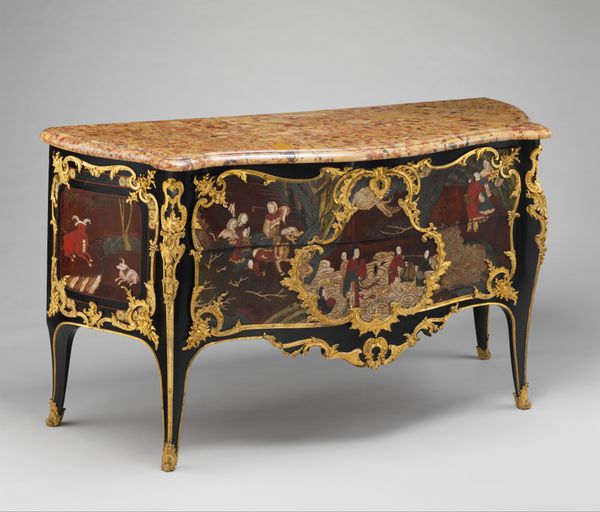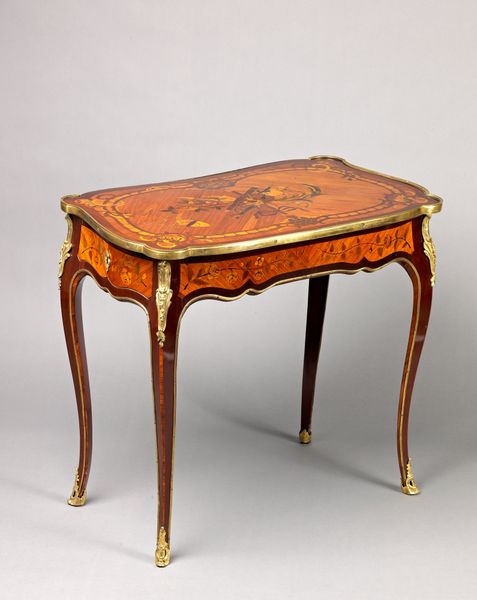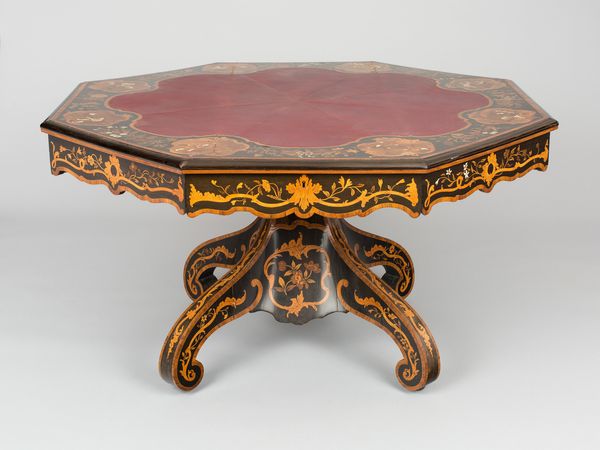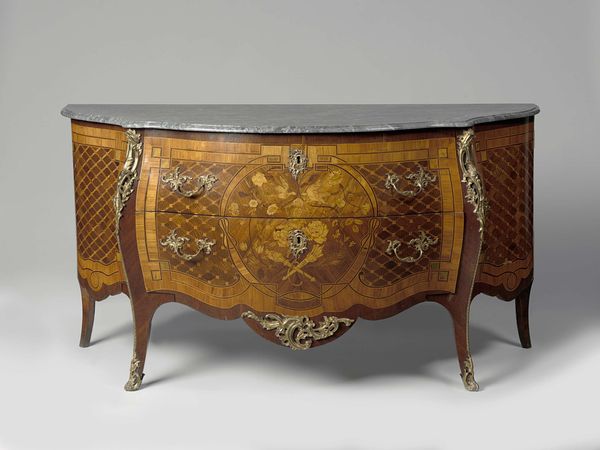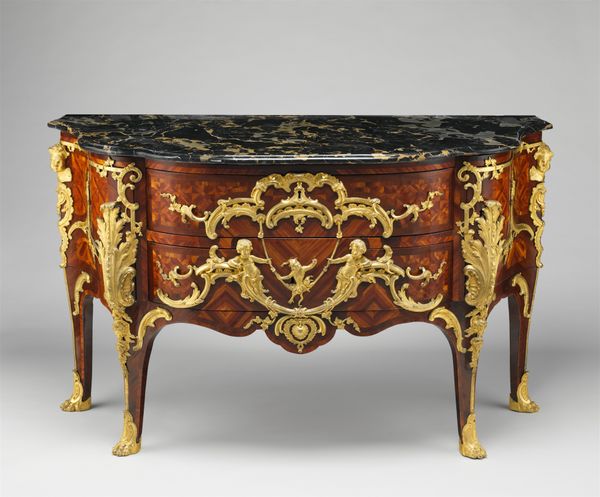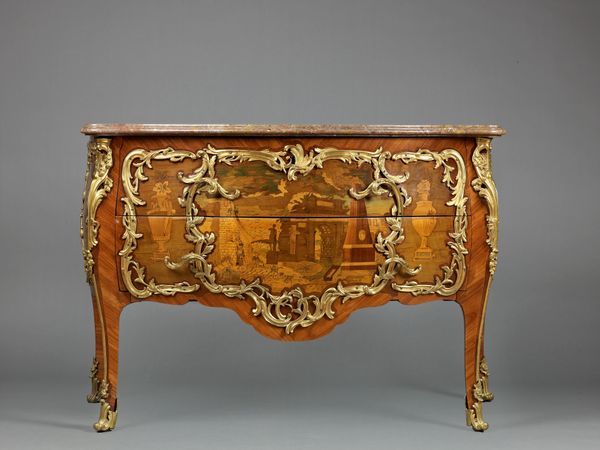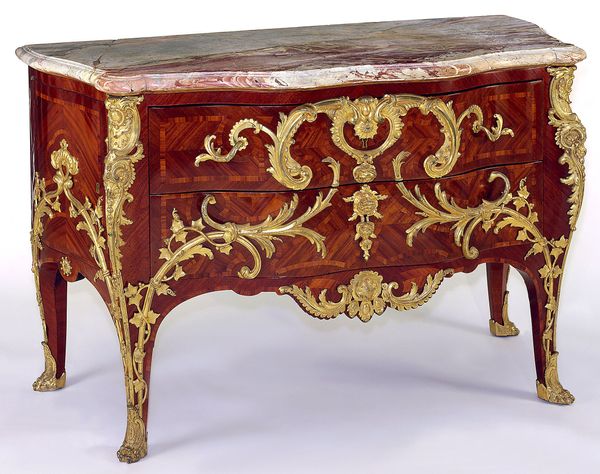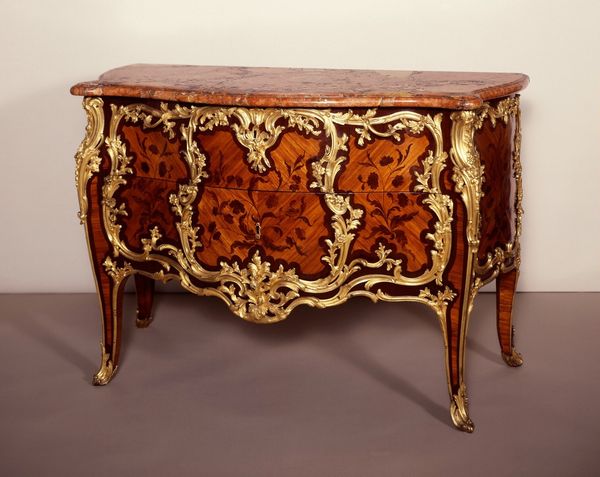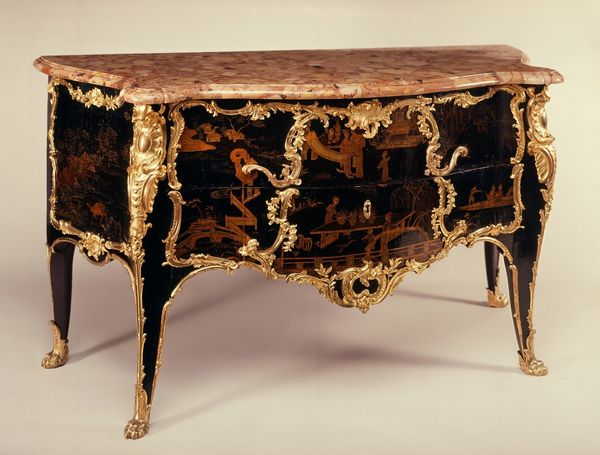
Dimensions: overall: 85.5 x 131.7 x 60.4 cm (33 11/16 x 51 7/8 x 23 3/4 in.)
Copyright: National Gallery of Art: CC0 1.0
Editor: We're looking at a "Chest of Drawers," also called a "commode," created before 1772 by Joseph Baumhauer. It combines wood, marble, and gilding—it's such a lavish piece! I'm immediately struck by the opulence; it feels less like functional furniture and more like a sculptural statement. What catches your eye? Curator: Well, this piece screams Rococo excess! But let's look closer. Notice how the wood grain is treated almost like another decorative element, carefully chosen and placed. Think about the labour involved. Someone had to select, carve, and fit these elaborate gilded ornaments. Was the process one of mass-production? Is that tension present in these objects intended for aristocratic life? Editor: That’s a good point – it looks handmade, yet those gilded details seem almost too uniform for a completely bespoke process. It makes me wonder about the role of workshops and the division of labor. Curator: Exactly. How many different hands touched this piece? Where did Baumhauer source the marble, the wood, the gilding? Was this truly his design alone, or the culmination of many skills in the workshop? What does this kind of commodity say about 18th-century society, it's structures, hierarchies, and division of labour? Editor: I never really considered the implications behind something as seemingly simple as a chest of drawers. Thinking about the journey of the materials, the different crafts involved, really contextualizes the object in its time. Curator: Indeed! Shifting our focus from authorship and aesthetics toward the methods, materiality, and manpower exposes fascinating networks and socio-economic histories contained within the object itself. The commode then transforms into a material record, a witness to production. Editor: I see it differently now. It's not *just* pretty; it embodies the economy and craft of its era. Thanks!
Comments
No comments
Be the first to comment and join the conversation on the ultimate creative platform.

